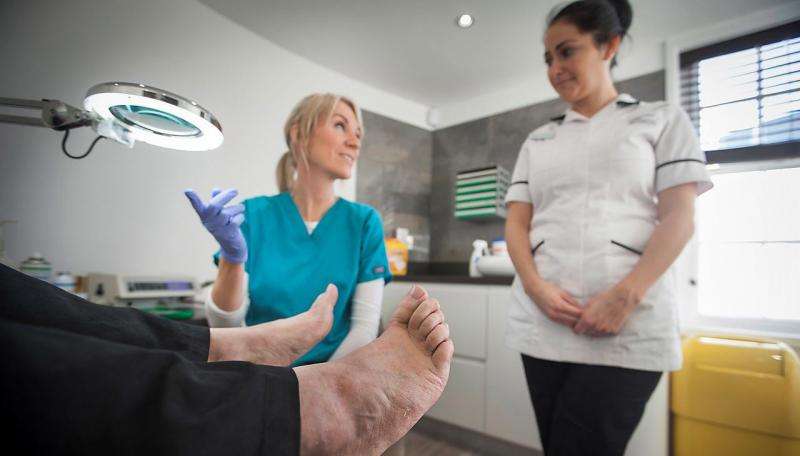A new mathematical model to predict the pressure on feet, which could then lead to the prevention of foot ulcers, could be developed thanks to academics at Plymouth University.
Dr Miriam McMullan, Lecturer in Podiatry, and Dr Jason Hughes, from the University's Mathematical Sciences Research Centre, are collaborating to devise the model thanks to a grant from the University's Institute of Health and Community Pump Priming Fund.
The model will aim to estimate horizontal plantar shear, which, combined with vertical pressure, is one of the causes of foot ulceration – especially prevalent in people with diabetic peripheral neuropathy.
Unlike vertical pressure, which is measured by commercially available devices, horizontal pressure is estimated by an existing mathematical model; the accuracy of which is limited as it requires several assumptions.
However the new study aims to develop a more refined mathematical model using easily measurable vertical pressure data.
The model could potentially help to predict when and where ulcers might occur, thereby helping to prevent their development.
Dr McMullan said:
"When people with severe diabetic peripheral neuropathy start to lose sensation in their body, the feet are usually the first area to be affected. The horizontal and vertical pressure on the feet can result in ulcerations and, although the patient can't necessarily feel the ulcers, they can lead to further problems and infections.
"It is very difficult to measure horizontal plantar shear and, presently, it is impossible to directly measure subsurface shear. Although the existing mathematical model is a way of estimating horizontal pressure, the present model is limited by several assumptions. By improving the accuracy of the mathematical model currently utilised to predict horizontal pressure, we hope to provide a more effective way of preventing foot ulceration and also alleviate the problems of those who currently suffer."
Provided by University of Plymouth






















